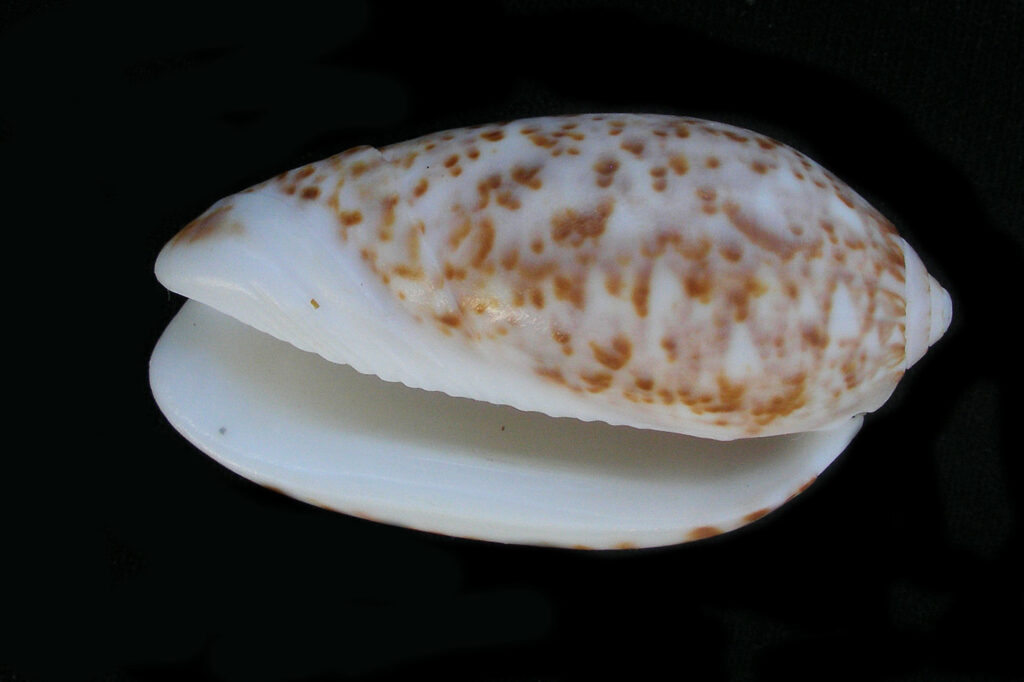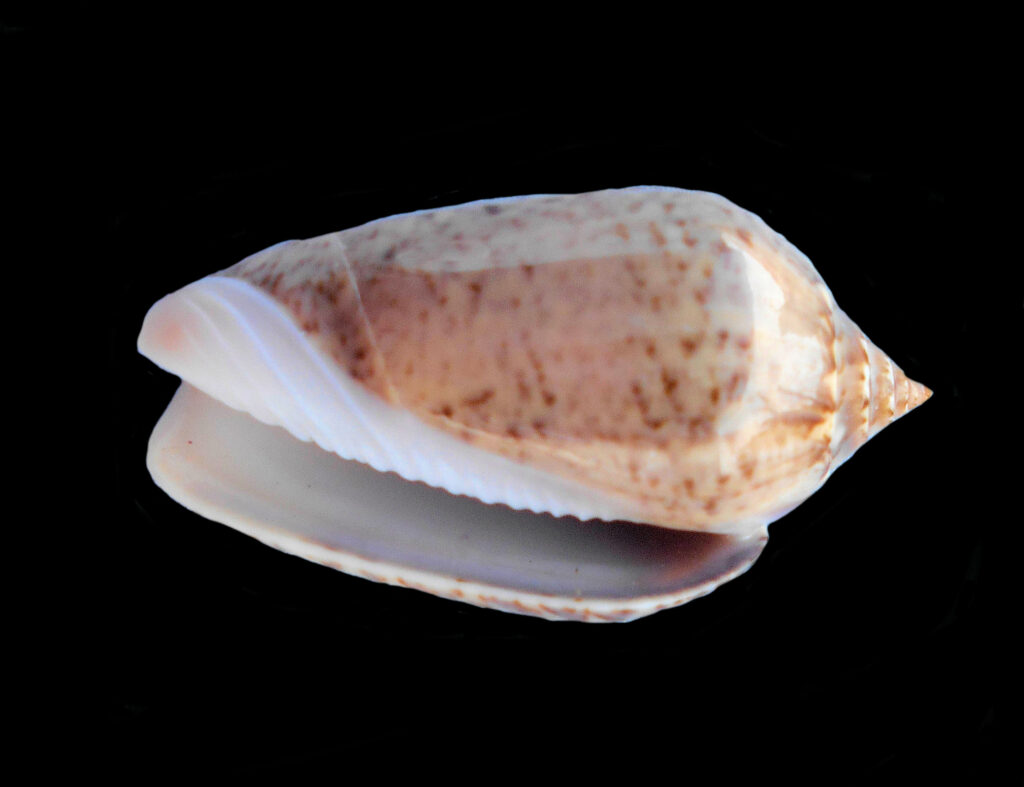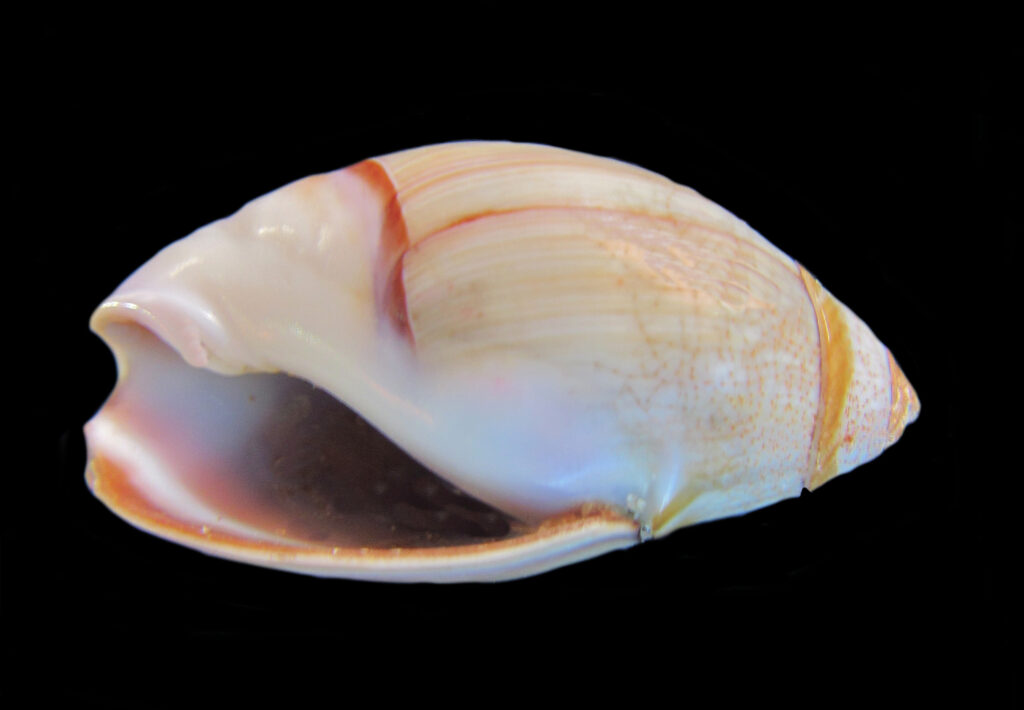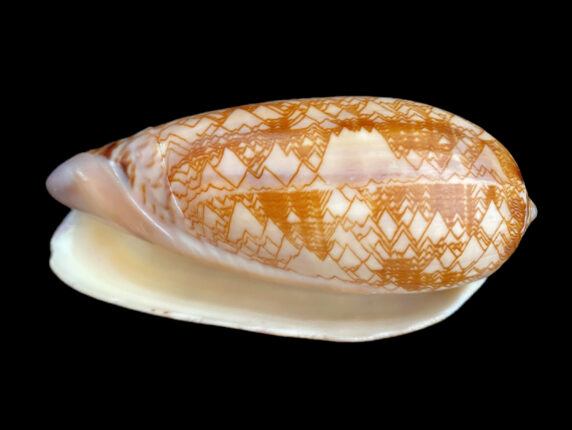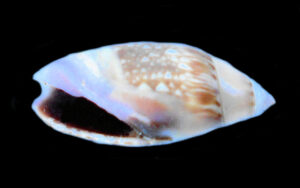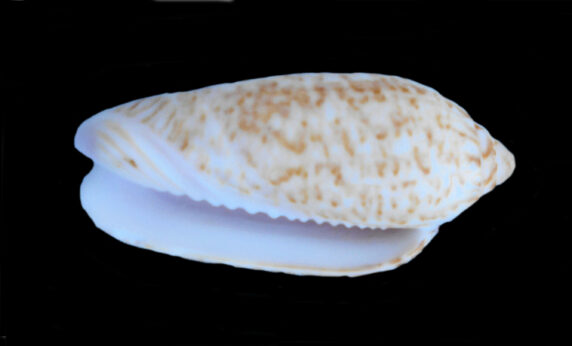Olive Shells of the Olivadae Family
Six Olive Shells of the Olivadae Family can be found in this website:
The Olive Shells of the Ovulid Family is a diverse Family. There are currently approximately three hundred forty species in the Ovulidae Family of which seven species are found along the Baja Peninsula. These shells, along with the Family Pediculariidae, are considered cowry allies. They are beautifully patterned and resemble cowries in that many are egg shaped that are externally sculpted with a few smooth folds with a large body whorl that make up the great majority of the shell. They have shiny exteriors, a low to moderate spire with a pointed apex and a very long aperture, and some have teeth along their elongated apertures. They differ from cowries in that they are generally smaller, they only have teeth along the outer aperture lip, and while they are shiny, they are not as shiny as cowries.
All Ovulids have an anterior and posterior siphon notch or canal, elongated apertures and they lack an operculum. Ovulids vary in shape from egg-shaped to spindle-shaped globose bodies. Some have very long siphonal canals and a short spinal notch at their anterior. Most Ovulid shells are a single color, with many being white. The live animal is usually very colorful. Most species extend their mantle, covering the shell and keeping it shiny.
Ovulids reside on sea fans, soft corals, and whip corals and within mud and sand substrate. They range from shallow water to depths in excess of 100 m (328 feet). They are nocturnal carnivores that feed as predators or as scavengers with their diets consisting of bivalves, gastropods (including other Olives), carrion and the polyps from some of their hosts. Some species incorporate the toxin, from the polyps that they eat, into their mantle the provides them with a defense mechanism. In turn they are preyed upon by shore birds, crabs, fish, and predatory mollusks.
Ovulids are found in tropical and temperate seas, worldwide.
